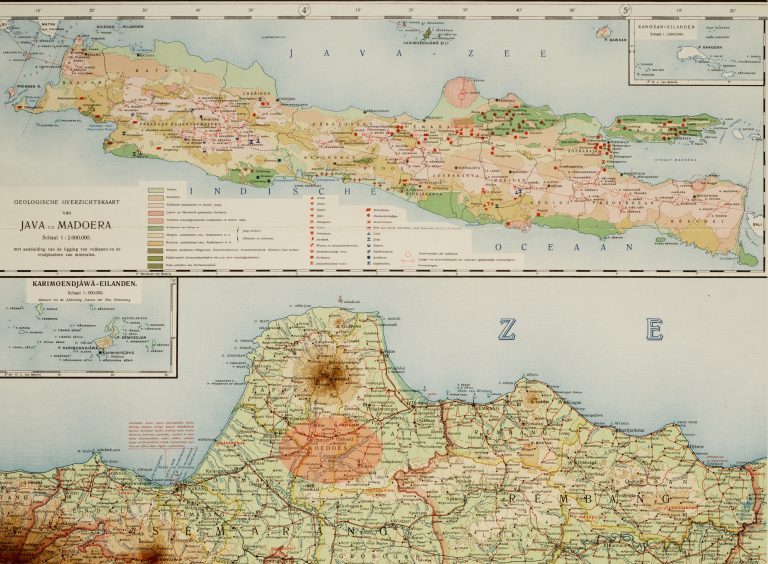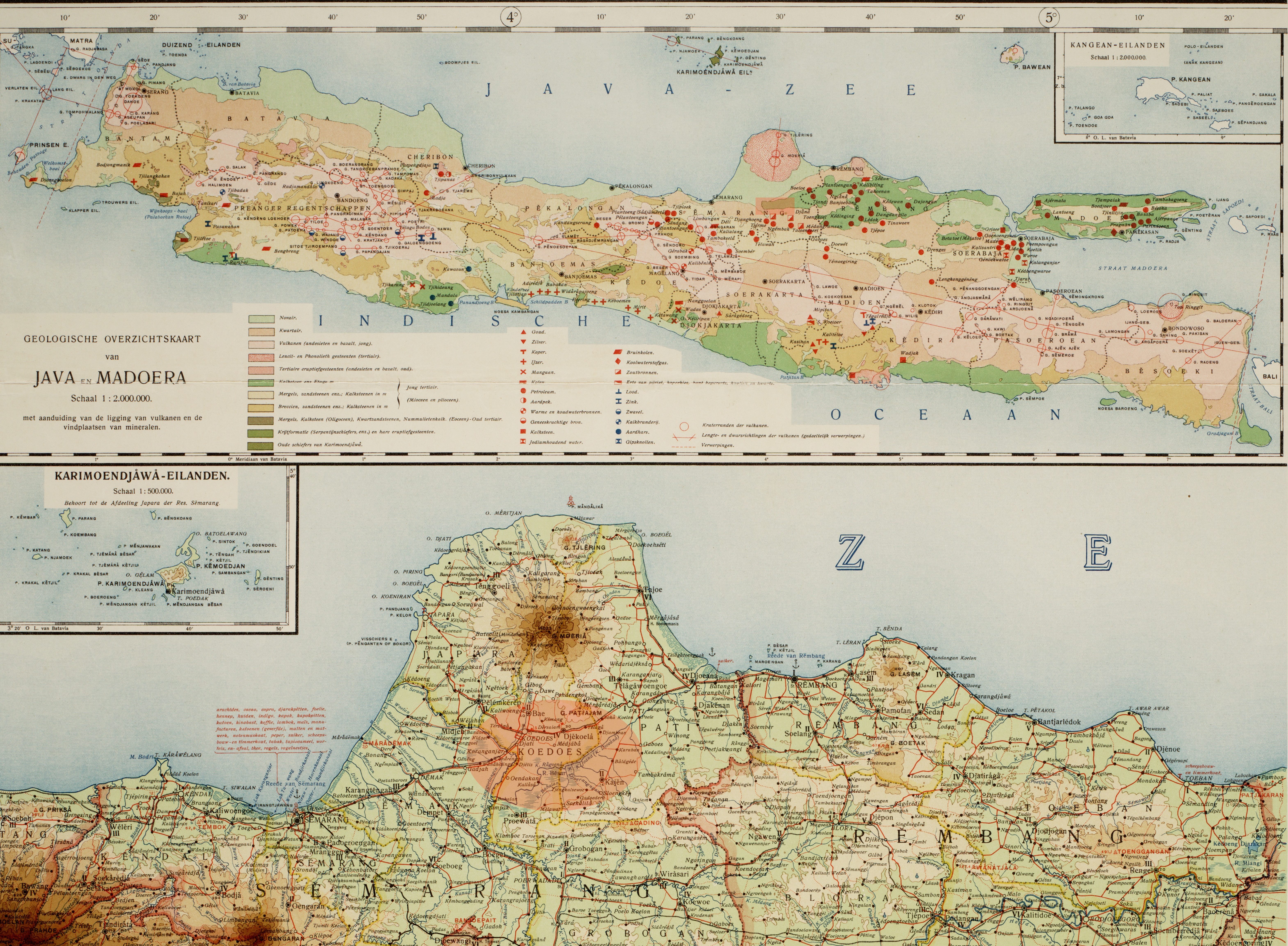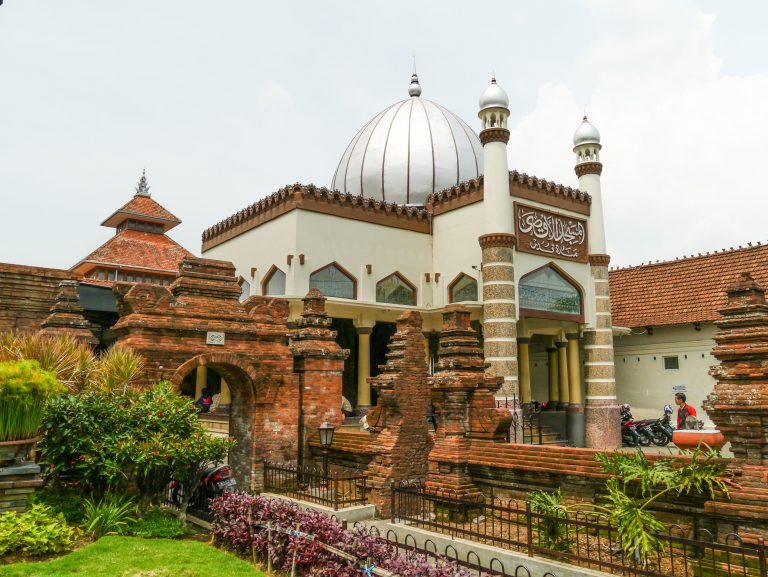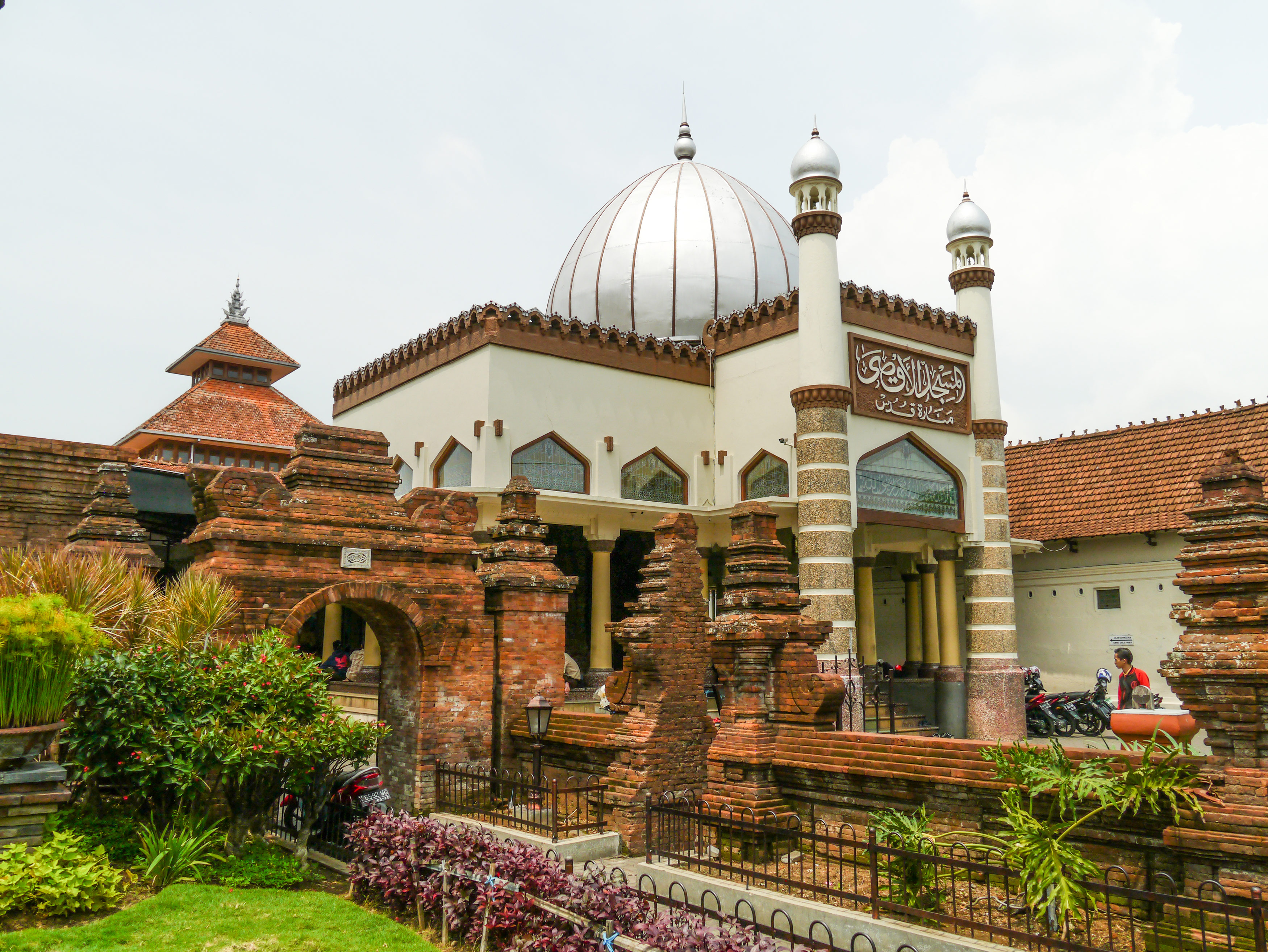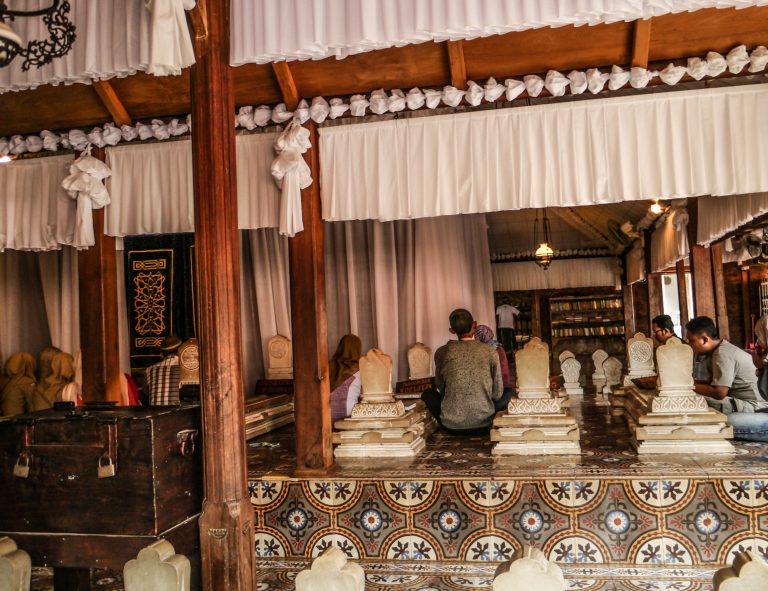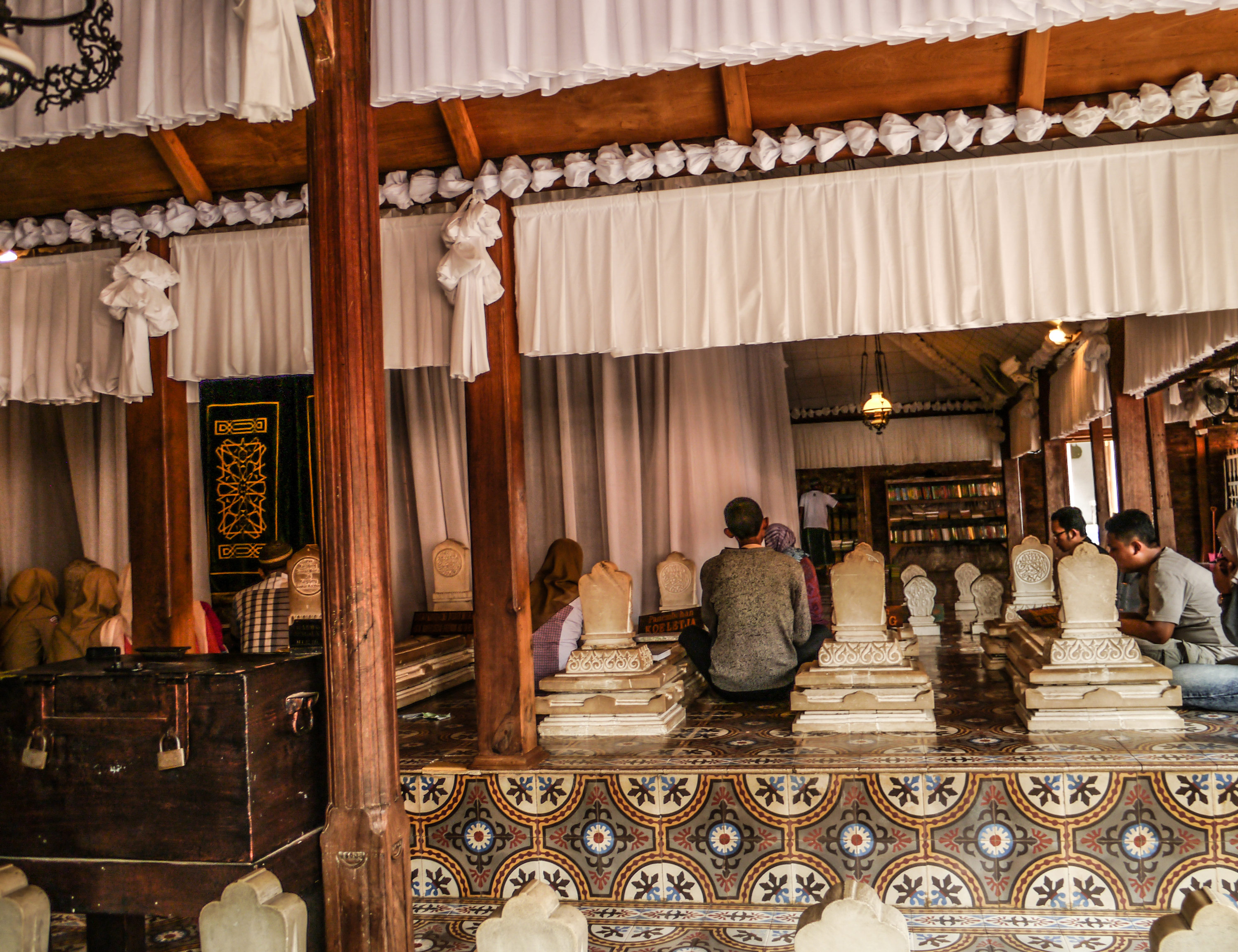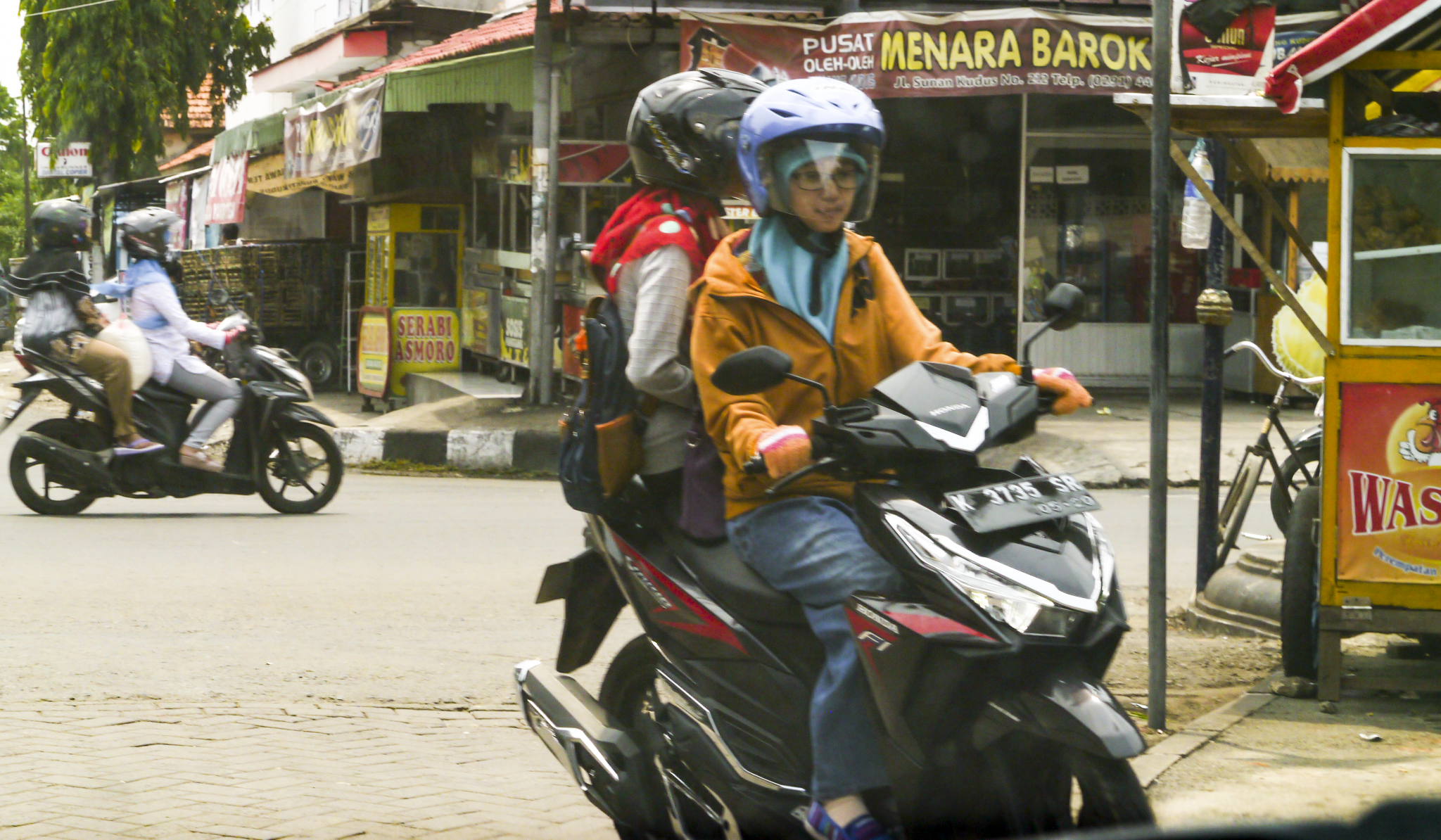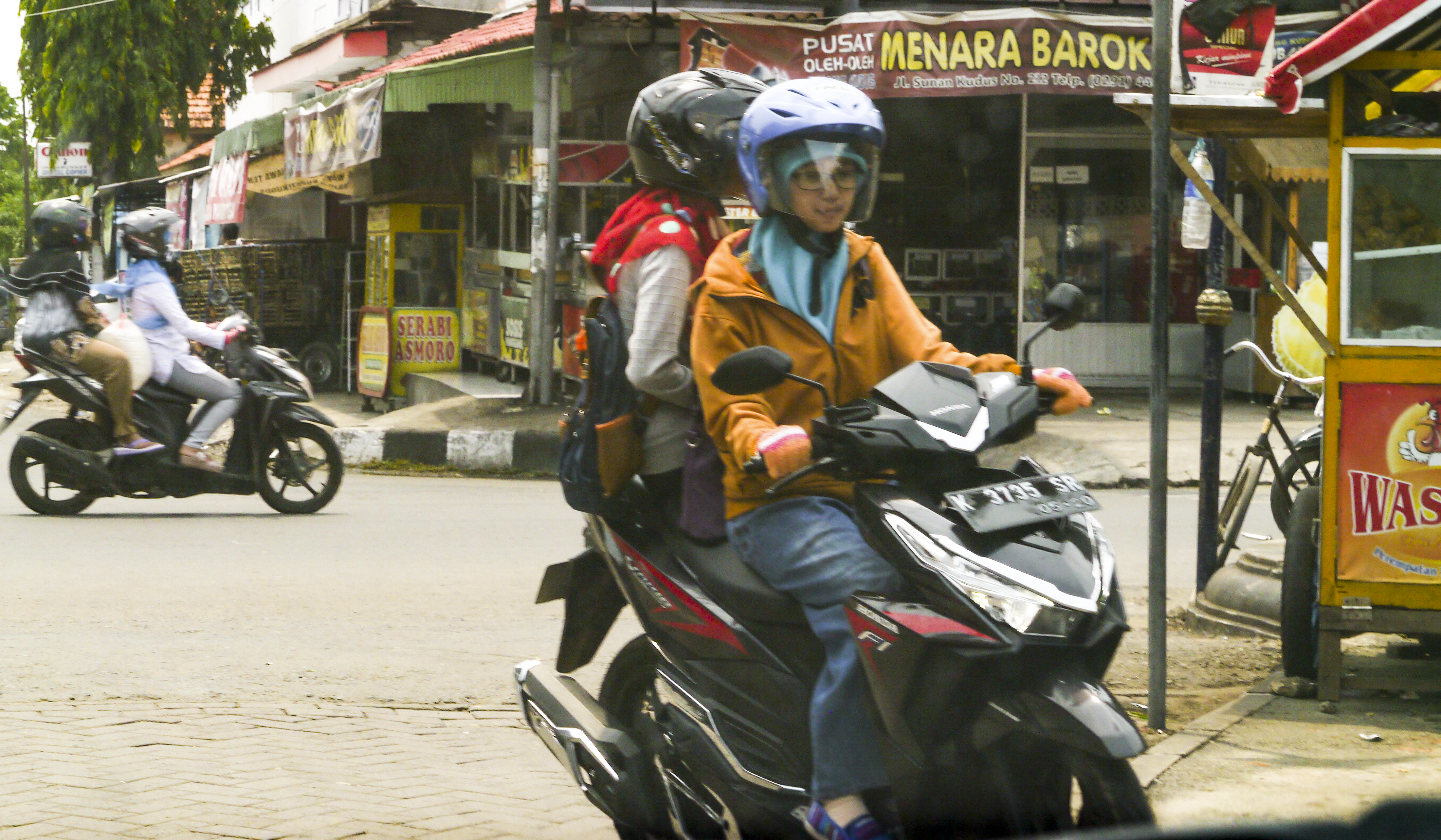At about 450 kilometers driving distance west of Jakarta, the capital of Indonesia, one can visit Jerusalem. This is not the celebrated city located in the Middle East. Rather, I am talking about Kudus, a town of about 70,000 people, set within the densely populated northern coast of the island of Java. The city’s name recalls an Arabic honorific for Jerusalem, al-Quds (the Holy).
The place also shares its name with a person, Sunan Kudus (d. ca. 1550), one of the Wali Songo, the nine saints regarded as the establishers of Javanese Islam since at least the eighteenth century. Old Kudus includes a religious complex that consists of a mosque and its accompanying minaret and a graveyard whose centerpiece is the burial place of Sunan Kudus himself. When I visited it in 2015, the shrine of Sunan Kudus was full of activity, a place to visit from near and afar today as much as it has been for nearly five centuries.
At the level of an immediate sensory encounter, the central religious complex in Kudus is like thousands of other mosques and shrines Muslims visit around the globe. It is a place to seek religious education and merit as well as to pray for the fulfillment of earthly desires. The name shared with Jerusalem makes things more special, linking the place to a long-standing paradigm of holy cities that pertains to Islam as well as to Judaism and Christianity. Through this connection, Sunan Kudus, the town’s purported founder, gets placed within a pedigree of prophetic and saintly figures regarded as originators of religious communities.
The nominal parallel between Kudus and Jerusalem continues to the mosques in the two places. The current structure at the forefront of the complex is of recent origin, but it stands in front of an older mosque whose surviving foundation stone dates to 1550 CE and is among the oldest examples of Arabic epigraphy on the island. The text on the stone refers to the mosque as Masjid al-Aqsa, the “farthest mosque,” recalling the Muslim monument on Jerusalem’s Temple Mount, al-Haram ash-Sharif, that goes back to the seventh century CE. The mosque’s name comes from the text of the Quran (17:1) where it is stated that Prophet Muhammad traveled from the “sacred mosque” in Mecca to the ‘farthest mosque” before proceeding on a heavenly ascent at a crucial moment in his prophetic career.
In narratives as well as observed practice, Kudus and its environs function as a kind of Islamic holy land central to the story of Java becoming an Islamic place. But for all its significance, evidence for writing an adequately annotated historical account of the area is scarce. Literary sources are limited to the eighteenth century at the earliest, a century and a half later than the life of founders such as Sunan Kudus. Similarly, material remains amenable to archaeological or epigraphical analyses are lacking because of continuous rebuilding in a densely inhabited area.
In a way, Kudus represents the inverse of the situation of the Friday mosque in Isfahan discussed in the first chapter. The sense of time sedimented into a physical deposit one might get in Iran is utterly absent in the experience of Kudus. But reflecting on Kudus leads to appreciating a different but equally crucial temporal richness. Here, one encounters melding of forms and orders of time into an evolving world that retains past antecedents while transforming toward the future. The mosque in Isfahan gives the impression of a time machine that has preserved prior eras. In the monuments, narratives, and symbolism of Kudus, the past protrudes inexorably into the present, acting as a limitation as well as a resource for imagination.
